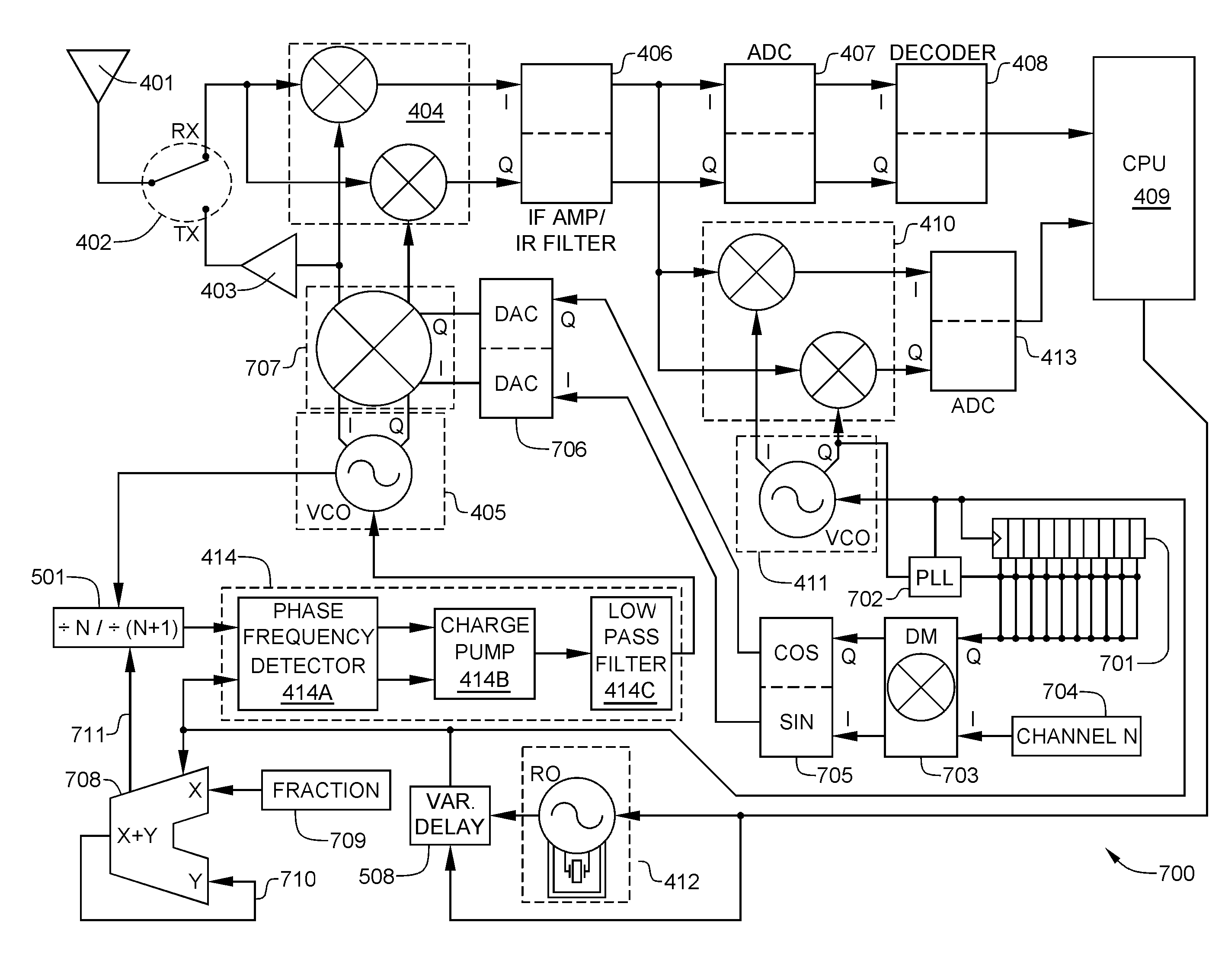High-resolution, active reflector radio frequency ranging system
a radio frequency ranging and active reflector technology, applied in the field of active reflector radio frequency distance measuring systems, can solve the problems of significant range errors, frequency systems that make inefficient use of the available ratio frequency spectrum, noise on either frequency may interfere with the process, etc., and achieve high resolution range measurements, address ranging inaccuracies, and increase the effect of phase shi
- Summary
- Abstract
- Description
- Claims
- Application Information
AI Technical Summary
Benefits of technology
Problems solved by technology
Method used
Image
Examples
Embodiment Construction
[0042]The present invention provides a system for low-cost radio frequency ranging that is grounded in establishing and maintaining phase and frequency coherency of signals received by a slave unit from a master unit and retransmitted to the master unit by the slave unit. Phase and frequency coherency is established through the use of a phase-lock loop, and maintained through the use, on both master and slave units, of thermally-insulated reference oscillators, which are highly stable over the short periods of time during which communications occur between a master unit and a slave unit. For preferred embodiments of the present invention, fractional phase-lock loops (also known as delta sigma phase-lock loops having a dithered divide ratio) are employed in order to provide both sufficient bandwidth at the low-pass filter, as well as adequate step resolution for both frequency generation and frequency modulation. In order to keep track of the fractional time frames of the fractional ...
PUM
 Login to View More
Login to View More Abstract
Description
Claims
Application Information
 Login to View More
Login to View More - R&D
- Intellectual Property
- Life Sciences
- Materials
- Tech Scout
- Unparalleled Data Quality
- Higher Quality Content
- 60% Fewer Hallucinations
Browse by: Latest US Patents, China's latest patents, Technical Efficacy Thesaurus, Application Domain, Technology Topic, Popular Technical Reports.
© 2025 PatSnap. All rights reserved.Legal|Privacy policy|Modern Slavery Act Transparency Statement|Sitemap|About US| Contact US: help@patsnap.com



